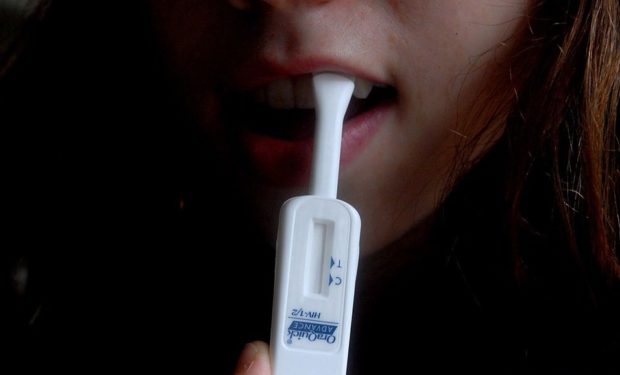Getting blood from a potentially infected person is not as easy as getting saliva. Let’s start there. Many people and cultures resist syringes — and drawing blood, even for those who don’t resist on principle, is a more cumbersome process than collecting spit in a cup. Problem is: it’s a lot easier to detect early stage HIV in blood than in saliva. While the antibodies that develop to fight the virus are hard to miss in a blood sample, in a saliva sample it’s less easy to detect HIV antibodies. (Fewer HIV antibodies are present in saliva, especially near the beginning of the infection.) Enter Stanford University chemists, working with the Alameda County Public Health Laboratory. The chemists, led by Stanford professor Carolyn Bertozzi, developed a way to get those HIV antibodies in saliva to act in a way that made them detectable. Writer Nathan Collins at Stanford describes the technique used with admirable concision:
“The team took advantage of a key feature of antibodies – they have two arms, each of which easily latches onto a virus like HIV. They took bits of HIV and attached them to one or the other half of a piece of DNA. They then added the modified HIV bits into the saliva sample. If the sample contained HIV antibodies, their two arms would grab hold of the tagged HIV, bringing the two halves of the DNA together into a continuous strand. Once the DNA piece is made whole it is easy to detect using standard lab techniques.”
There are currently oral HIV tests, but this newly developed technique has the potential to make oral tests much more accurate. The aim is that the new HIV oral testing technique will also enable health care professionals to make the HIV detection earlier in the cycle of the infection. Early detection of HIV, of course, is the first line of defense against spreading the virus.
